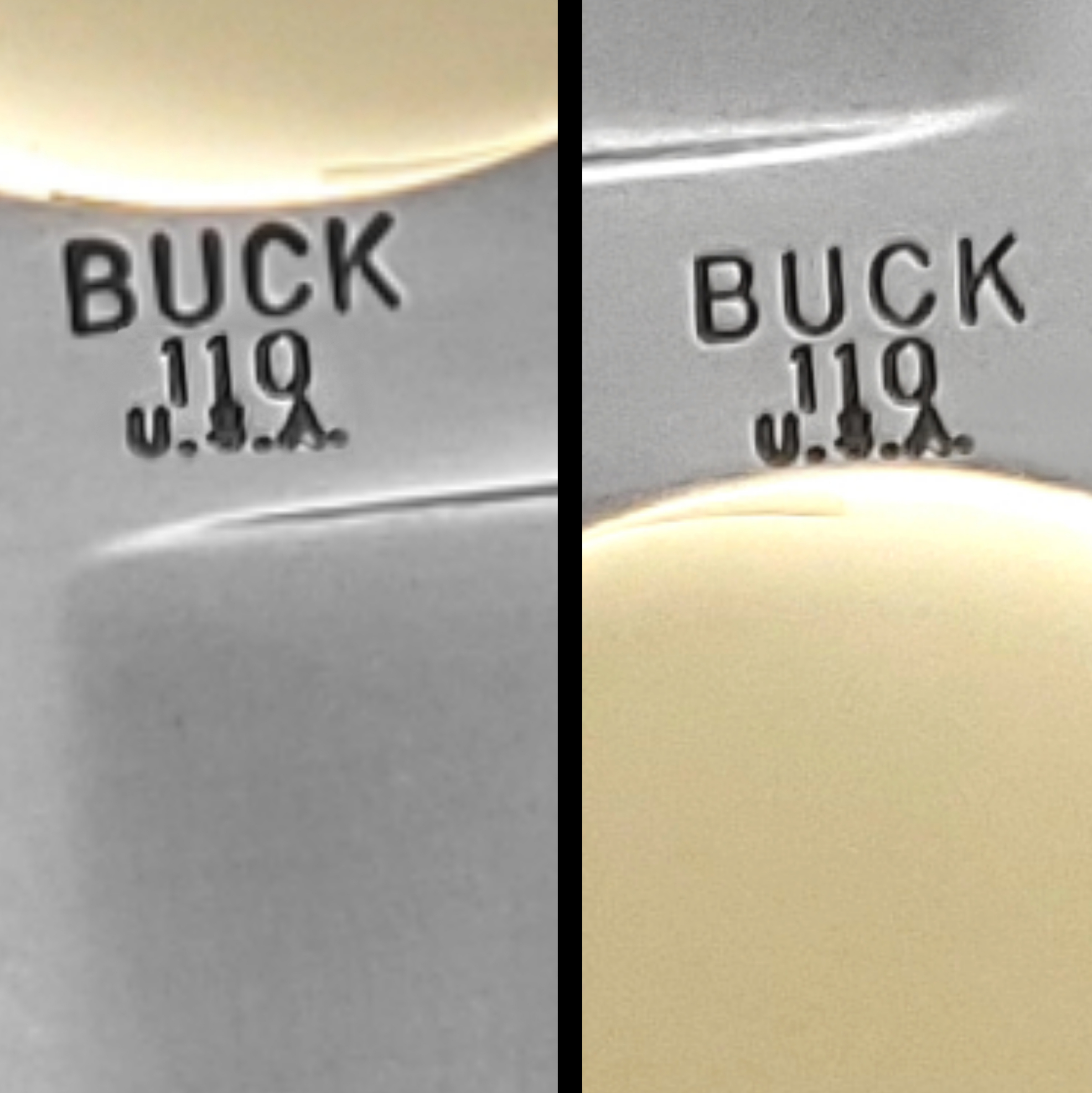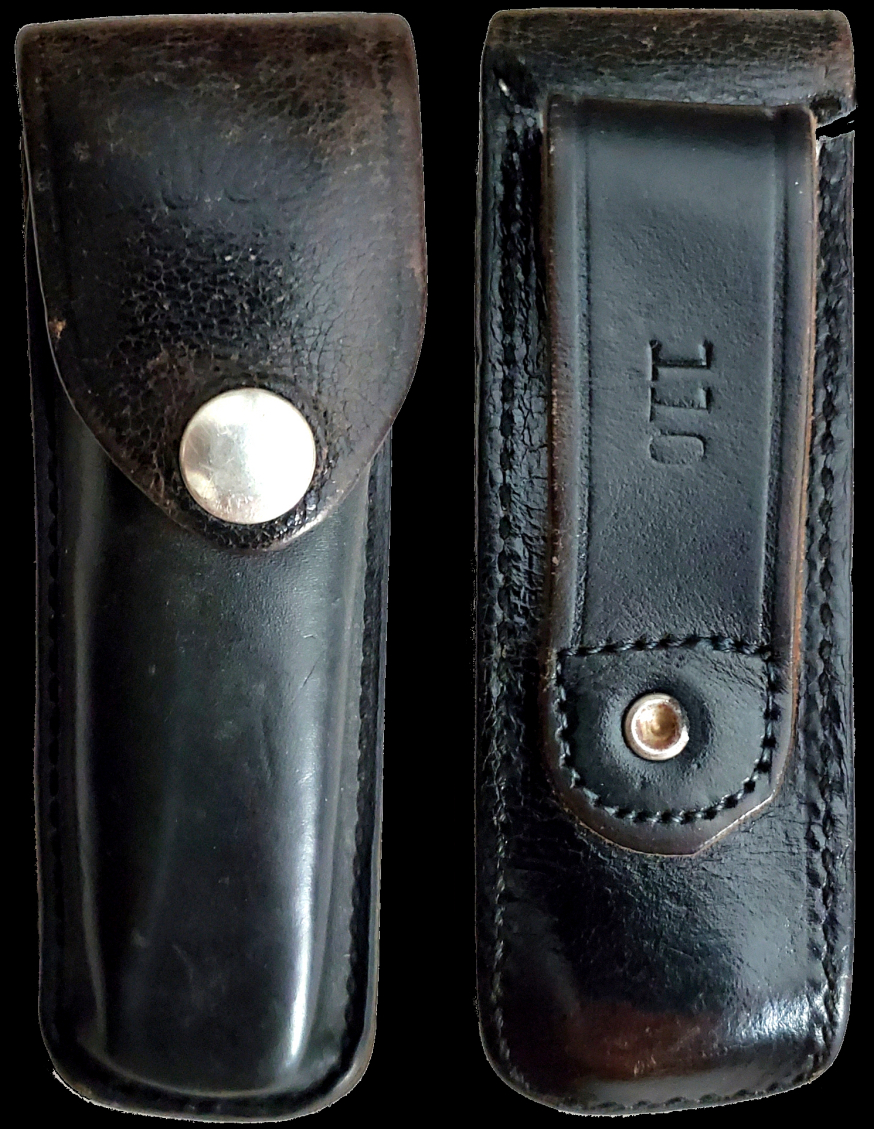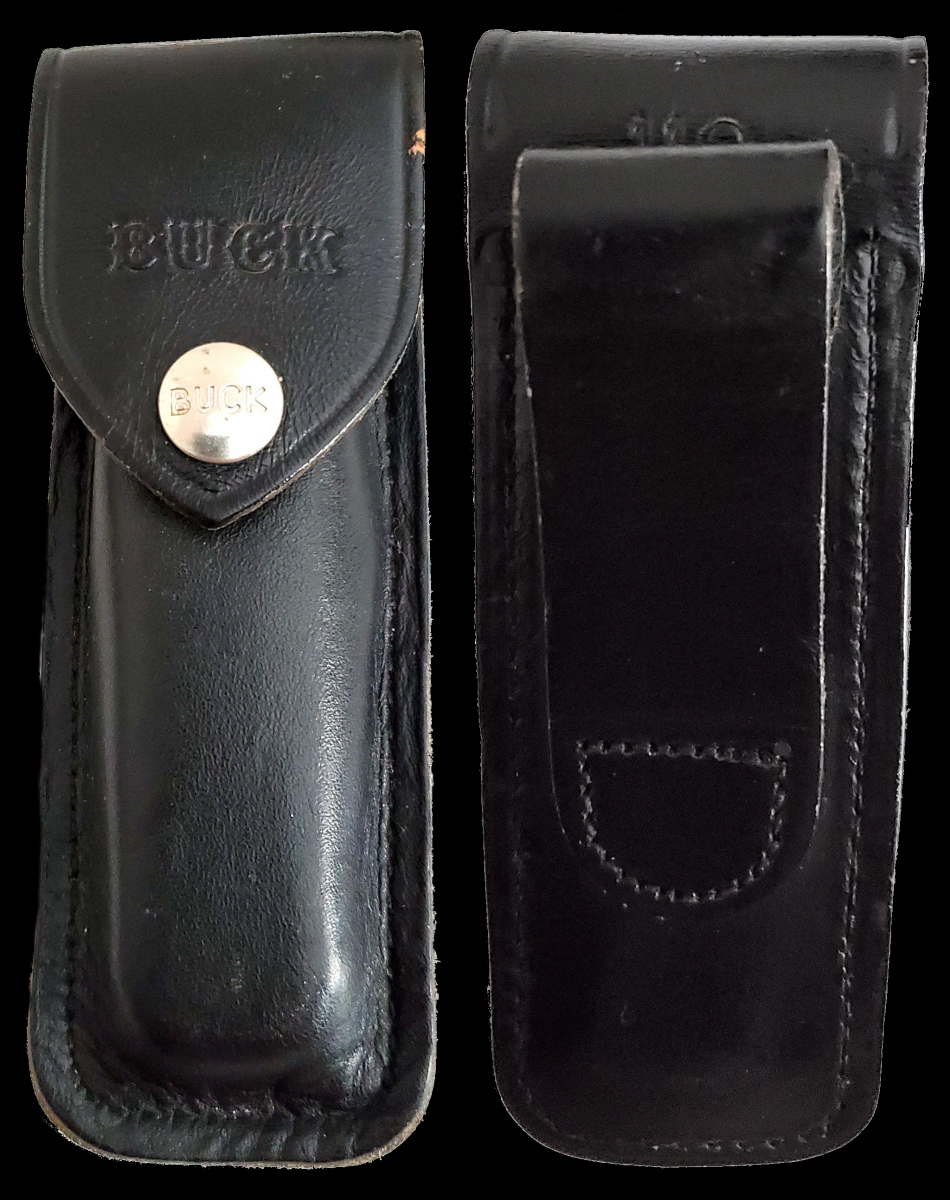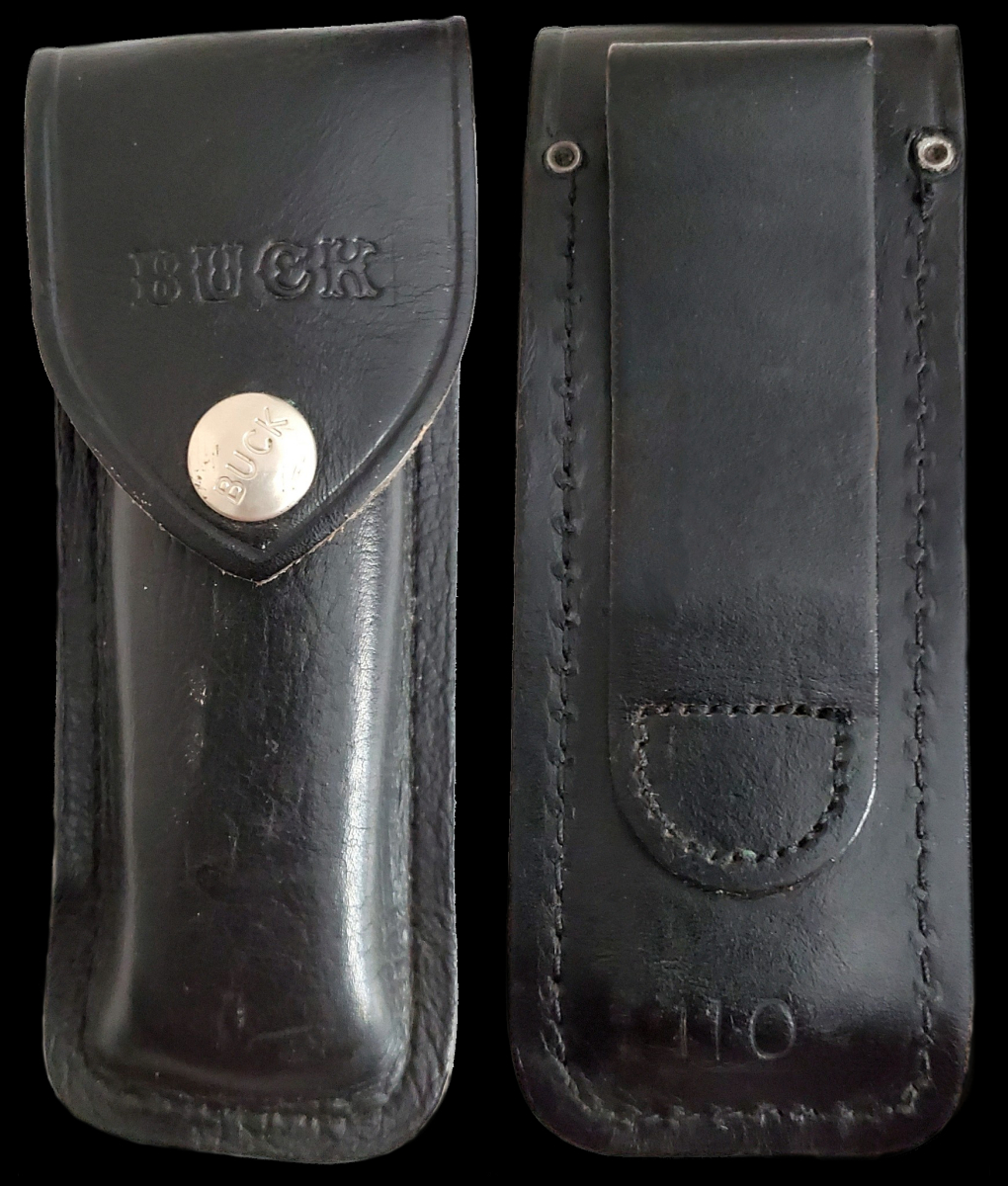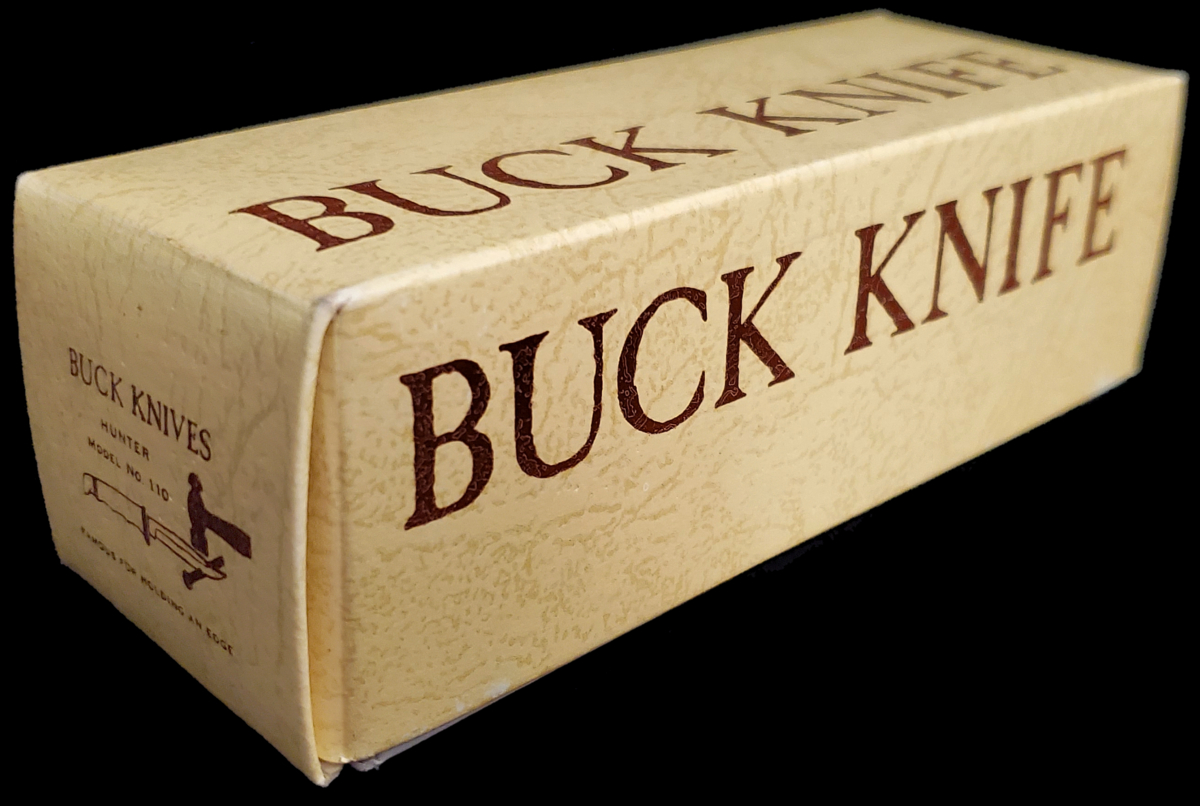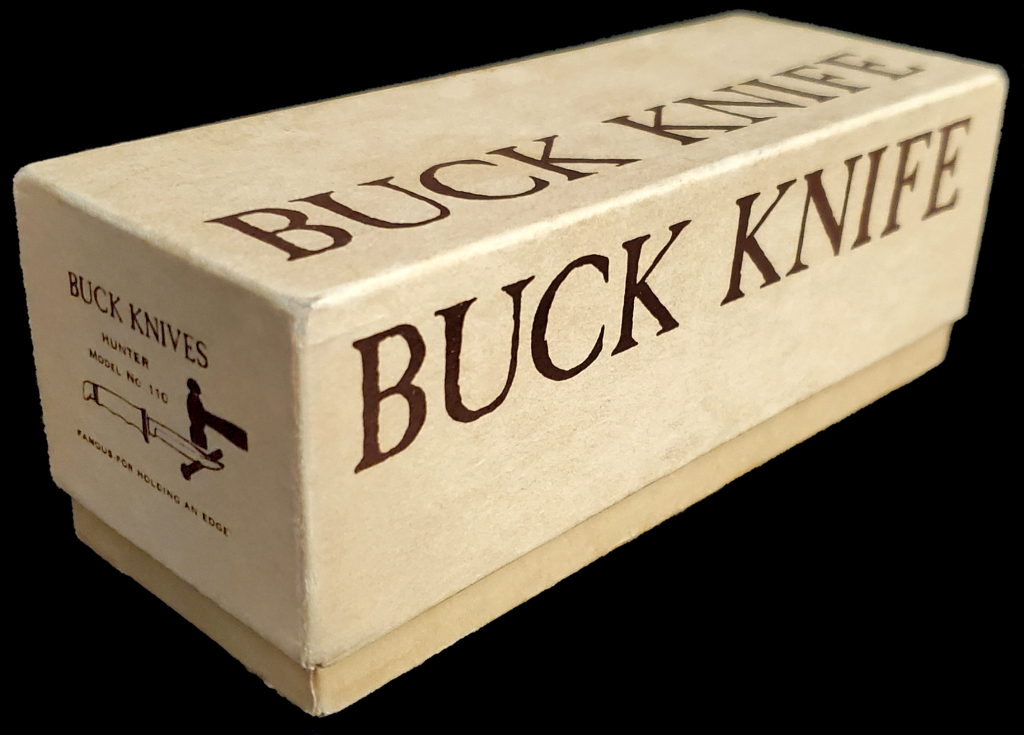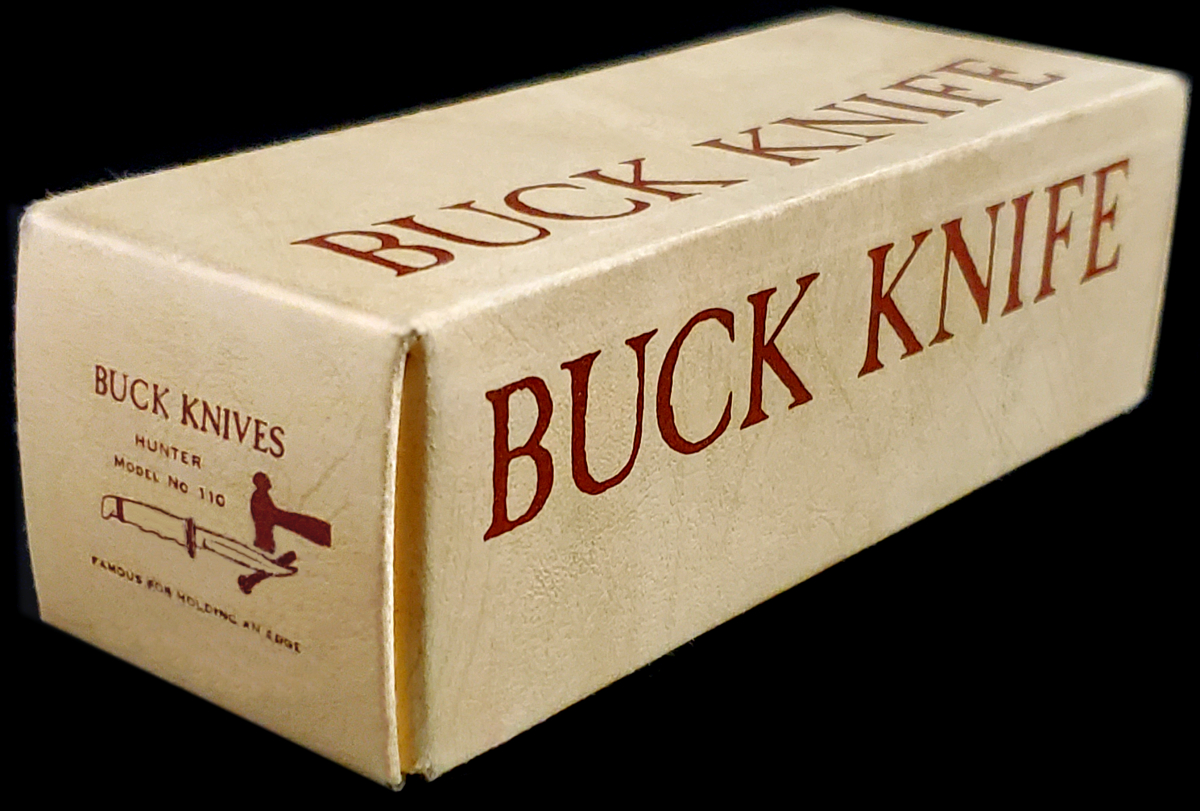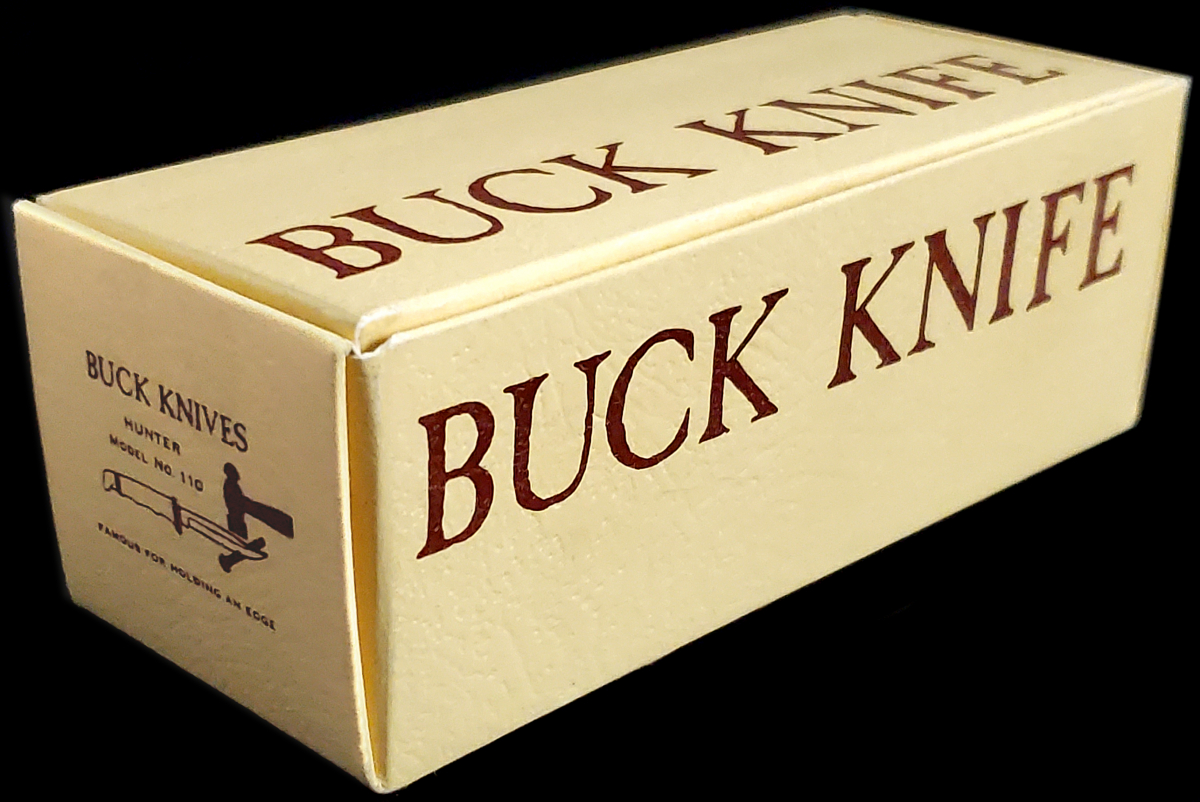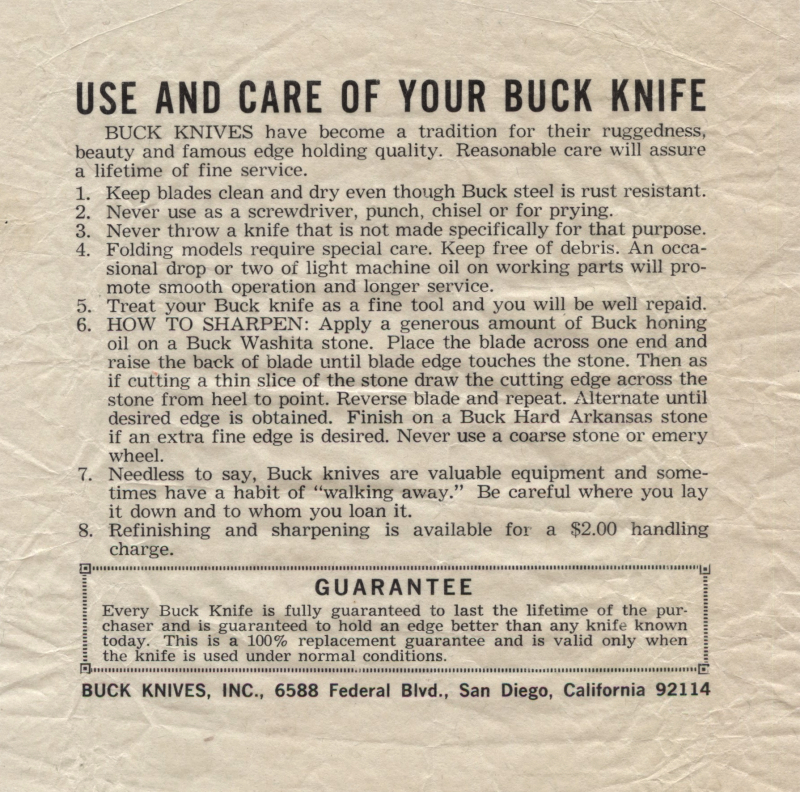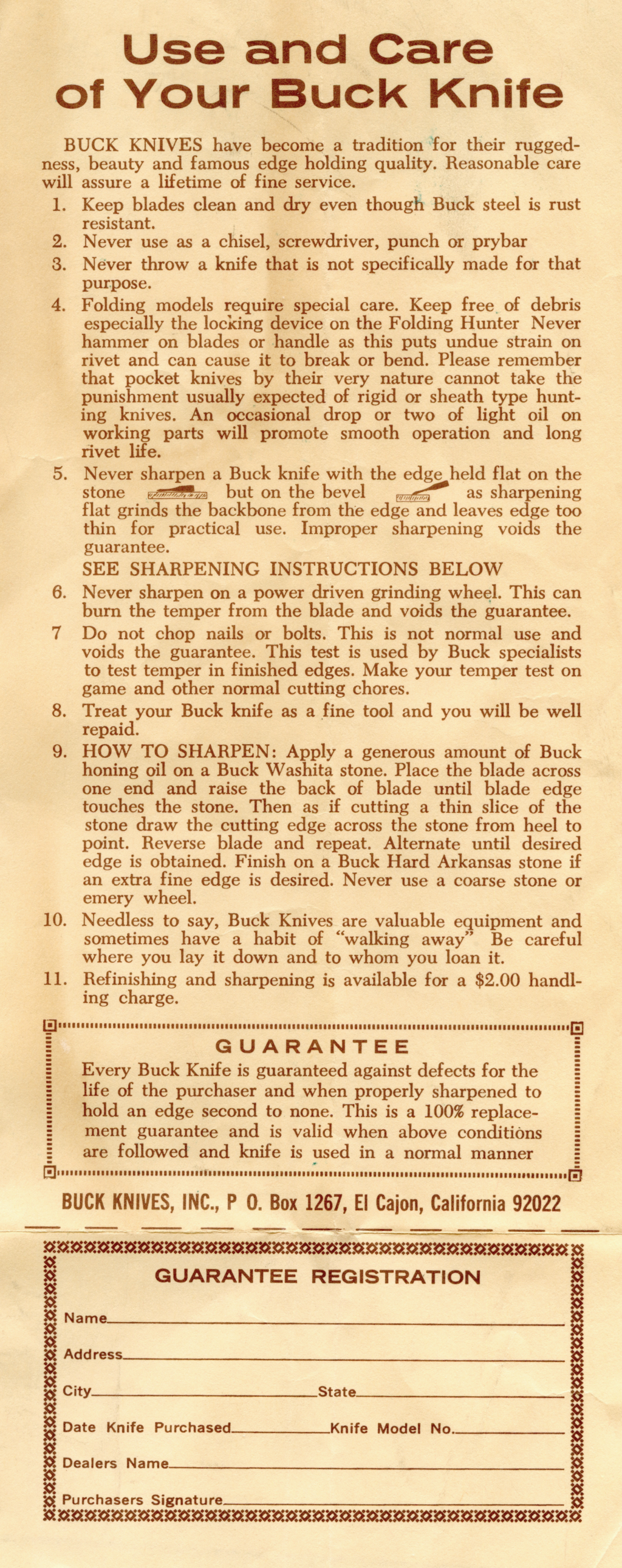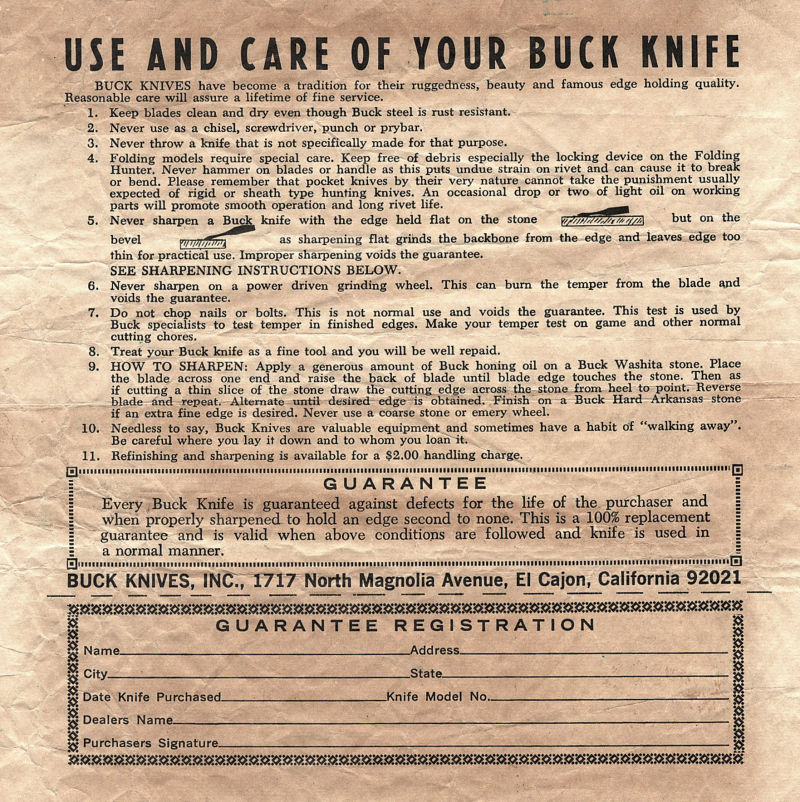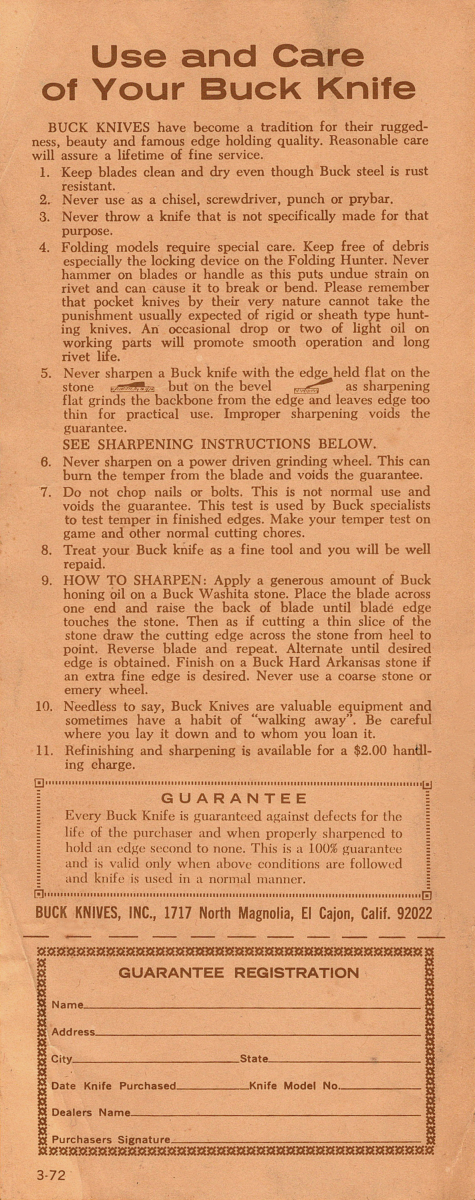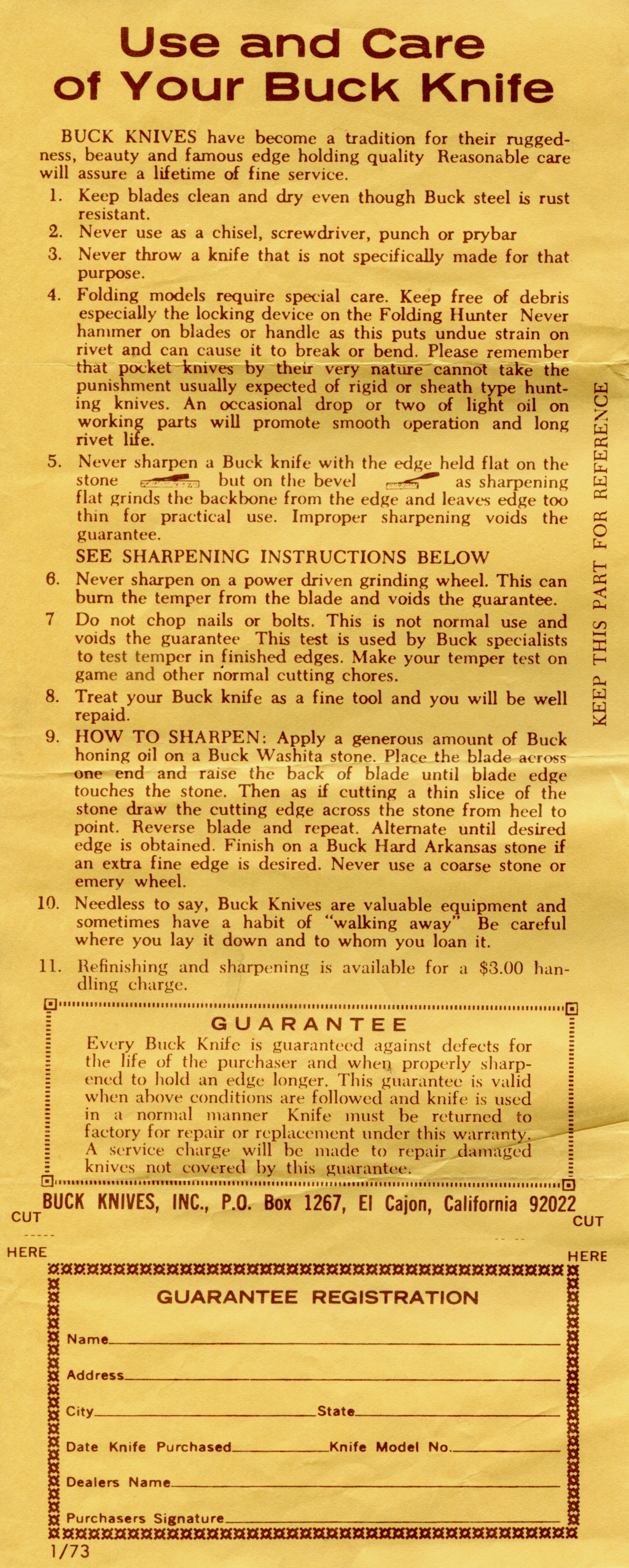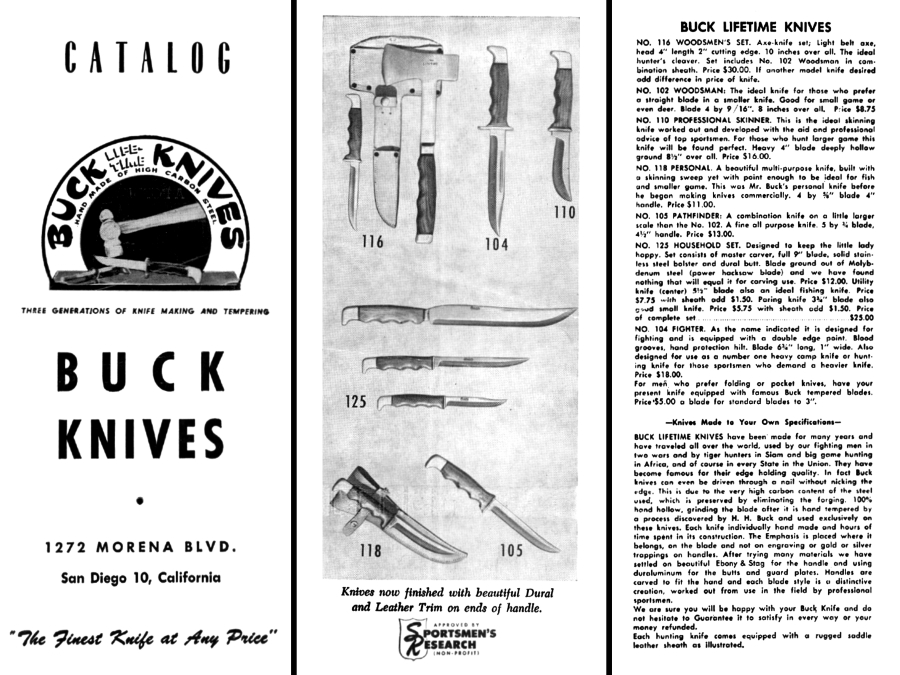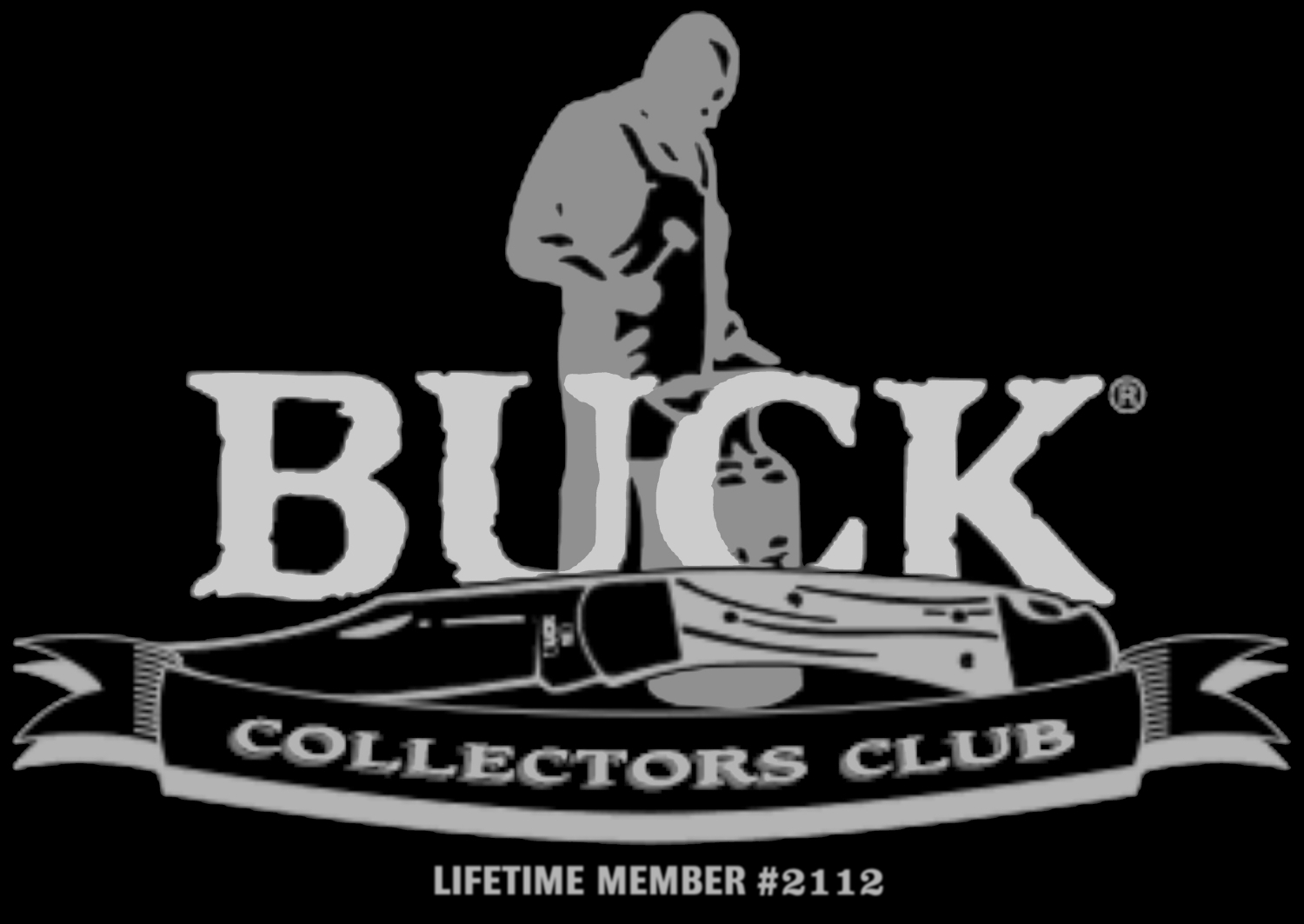 |


|
| First Version | Second Version | Third Version | Fourth Version | Fifth Version | Sixth Version | Seventh Version | Favorites |
| 1960s Accessories | 1970s Accessories | 1980s Accessories |
 |
NEW PAGE! |

| WELCOME |

|
HOW
TO IDENTIFY YOUR BUCK 110
Most
of the time when one has a newly found Buck 110 in their hand that
person will likely
be asking themselves, "What year is this 110?", especially if it's an older model with no date code stamped on it. Well, you have come to the right place. Prior to 1986, the Buck Knives factory did not use a singular date code on any of their knives. With the information below, you should be able to put together a fairly accurate production time frame on the knife in your hand. Below, you will find explanations defining the different methods used to date and identify a pre-1986 Buck 110. You will learn the language used amongst most knife collectors specific to the 1964 to 1986 Buck 110 Folding Hunter. You will also find throughout the remainder of the webpage that there are date ranges used on several of the models, as the Buck Knives factory did not keep records of specific dates on the model variations featured on this webpage. This is a culmination of several collectors previous work on estimating date ranges. FIRST
... WHAT
VERSION DO YOU HAVE
Let
us start with identifying the 'Version' of your 110 in hand.
On this page there are
seven
versions from 1964 to 1986, and there have been five different 'spring and spring holders' (aka 'spacers') used over that period. They are located on the butt end of the knife between the frames, as shown in the photo to follow. 
SECOND ... WHAT IS A LINER You
will
often hear a collector or seller
reference a Buck 110 as a 'Two-Liner' or a 'Two-Line
Inverted'. The reference is used for the line count of the logo stamp that changed over a 6 year period from 1967 to 1972. It serves as a quick reference for the age of a knife to most collectors. Since the 1940s, all Buck Knives primarily had a one line inverted stamp of 'BUCK' on the blade tang. The 110 was introduced in 1964 with a one line horizontal stamp on the blade spine, shortly followed by a one line inverted stamp placed on the blade tang up until 1967. A second line was added in late 1967 when Buck Knives began to export to Canada. With the addition of 'U.S.A.' the knives later became known as 'Two-Liners'. In the early 1970s, believed to be 1972, another line was added to identify the model number of the knife, thus becoming a 'Three-Liner'.
THIRD ... WHAT VARIATION DO YOU HAVE Once
you have identified the version and line information, you
will want to find the variation.
To identify the variation of your 110, you need to identify the bolster rivets. For the most part you will be able to see the rivets on a well used knife with a good patina. In the case of a newly polished knife it will likely be difficult to see them. That's where the additional information below, about handle pins and blade logos, will further assist you in narrowing it down. Under each variation you will find a description accompanying each photo that tells of the blade rivet visibility on one or both bolsters. The same will also be found for the butt rivets, their numbers, and their visible locations. Most variations will have two butt rivets, with the exception of a couple variations having a single rivet, and one having three. In some cases, only because of the dissimilar brass source, the rivets patina will appear darker than the brass frames on a new or older 110. This difference in patina helps in making them easier to identify. You will find the majority of rivets located at the black dots, with the exception of the gray dot for the single or third butt rivet.
FOURTH ... HANDLE PINS You will want to identify the number of 'pins' used to secure the wood handles (aka 'scales') to the
frames. There
are three versions of pin patterns used for the years discussed on this
page.
You will find 'Two-Pins' on models 1964 to 1974, 'Four-Pins' on models 1974 to 1977, as well as 'Three-Pins' on models 1974 to 1977. There are two variations with no pins, they can be found pictured under Third Version. It is important to note that the larger center rivet is not a pin at all, it is called the 'Rocker Rivet' and it passes through both frames, where the handle pins do not. The rocker rivet is also not used in the counting of pins. It should also be noted, the pins are not dots when discussing 'Two-Dots'.
|
| 110
LOGO STAMPS Over
its 22 year course, the logo stamp went through several
changes until
the adoption of
new date codes in 1986. There are some very clear changes over time if you look really close at the minute details. There are 10 variations before the addition of the 110 model number in 1972. There may come a time when you get your hands on a really nice vintage model and cannot make out the rivet locations to identify the exact variation. With the spacer, pins, and logo samples below, you will be able to narrow it down. Clicking on the stamp image below will take you to the appropriate model. It will appear at the top of your screen. |
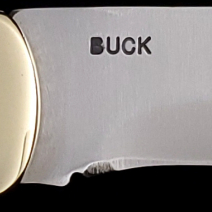 |
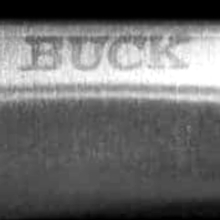 |
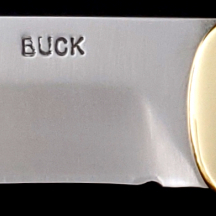 |
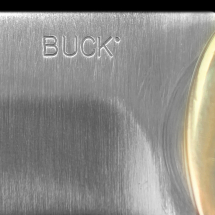 |
 |
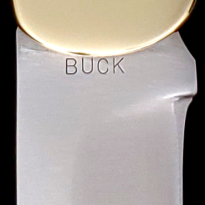 |
| 1964 - 1965 | Etched Pre-1967 | Pre-1967 | 1967 (A) | 1967 (B) | 1967 (C) |
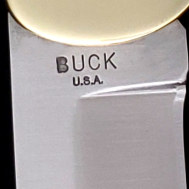 |
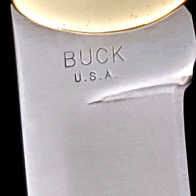 |
 |
 |
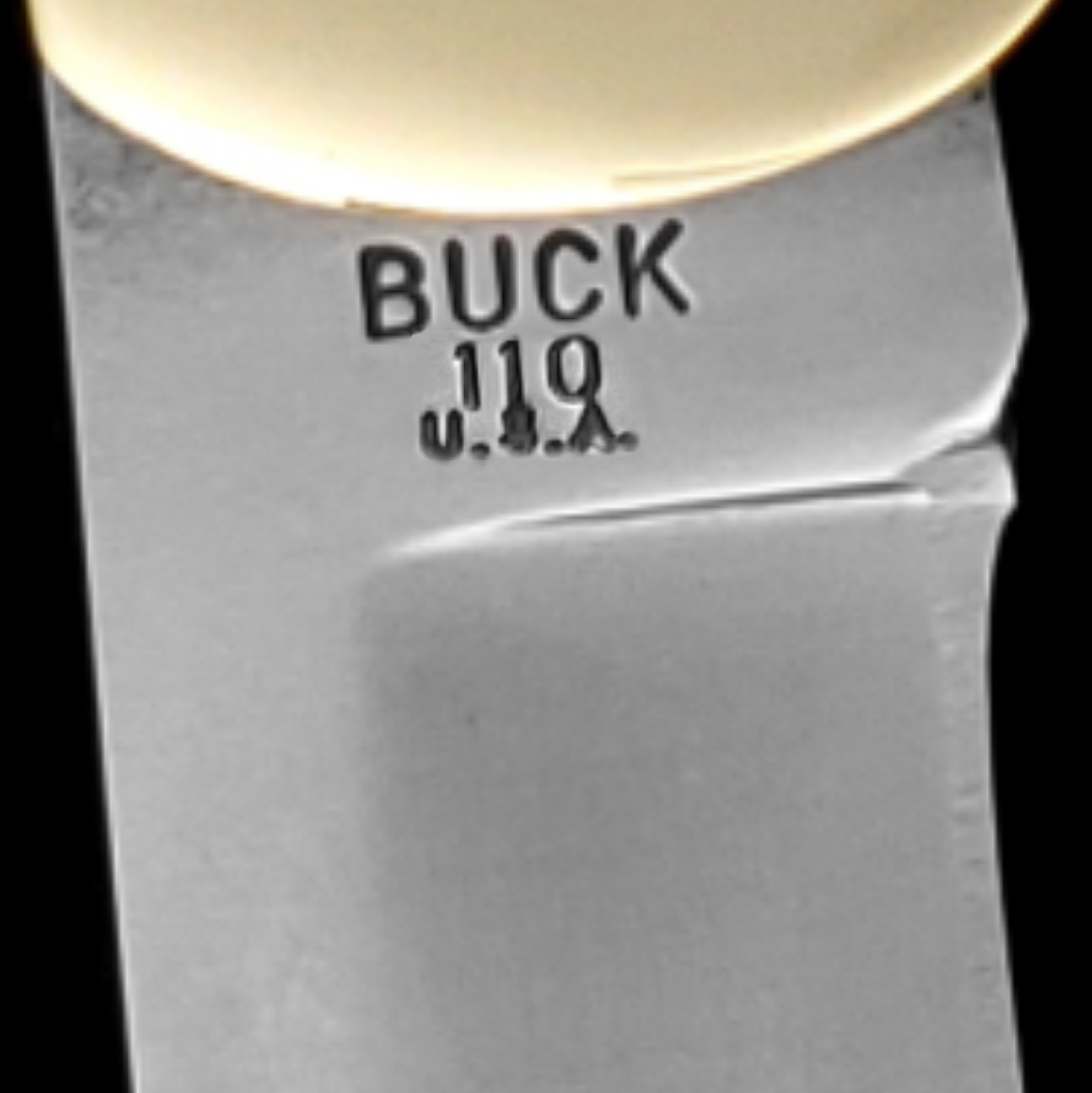 |
 |
| 1967 (D) | 1968 - 1970 | 1970 - 1972 (A) | 1970 - 1972 (B) | 1972 | 1972 - 1974 (A) |
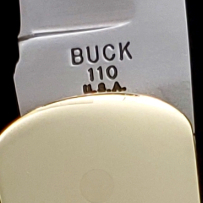 |
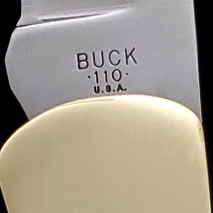 |
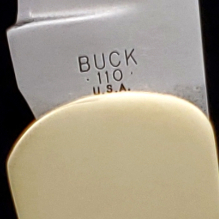 |
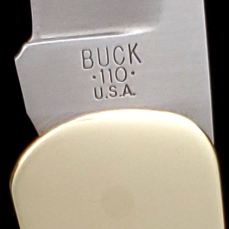 |
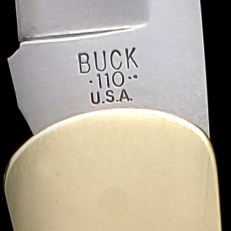 |
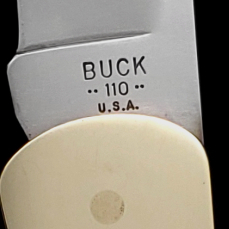 |
| 1972 - 1974 (B) | 1974 | 1974 - 1977 | 1977 - 1980 | 1980 - 1981 | 1981 - 1986 |
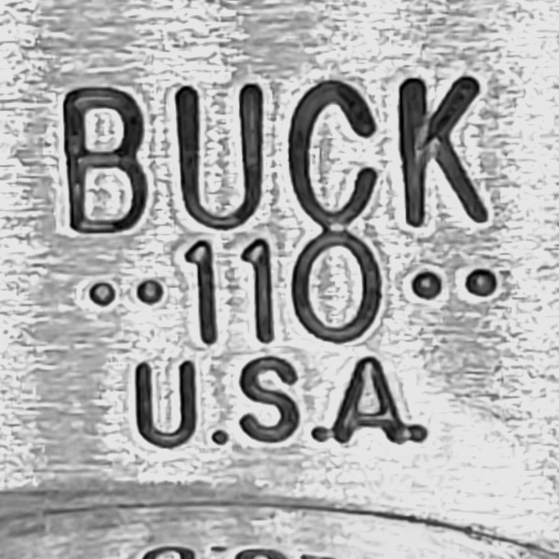 |
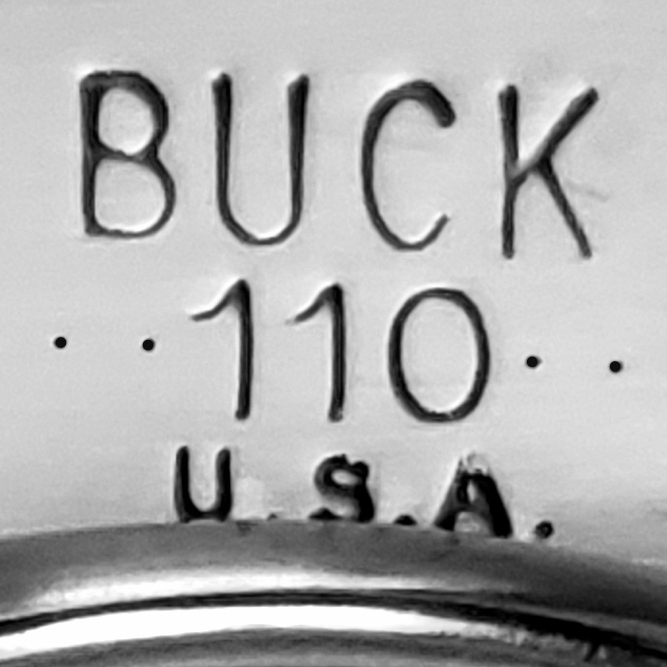 |
 |
Identifying 110s after Version
Seven Click on the photo to the right for a larger version of date codes after 1985. |
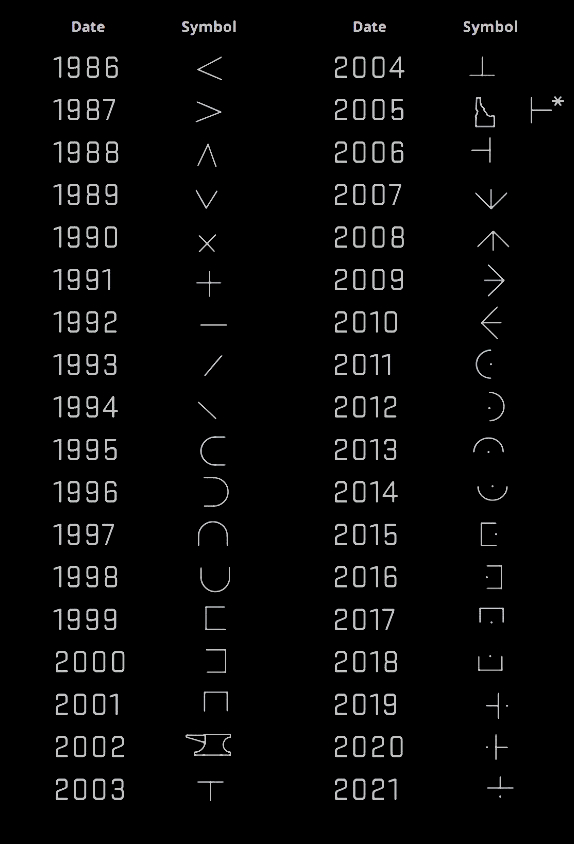 |
| 1984 - 1986 | 1985 - 1986 | 1986 |
| SQUARE SPRING VARIATIONS While collecting, you might eventually hear the term, "...with a square spring.", or come upon an occasional square spring while looking inside the frame of an older 110. The exact reason for this modification, whether it was for production sampling or an ongoing warranty repair over time, remains unknown to this day. Tracked over the years by factory historians, and collectors, they have been discovered in variations as early as the V3V2 and as late as the V4V1. The V3V9 seems to be the most frequent to have them, but still not in great abundance, as they are rare. |
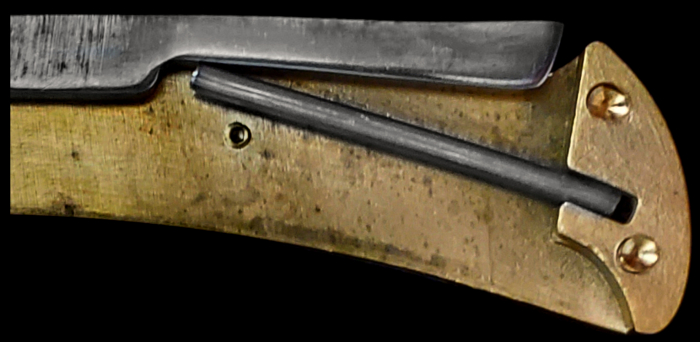 Common Round Spring |
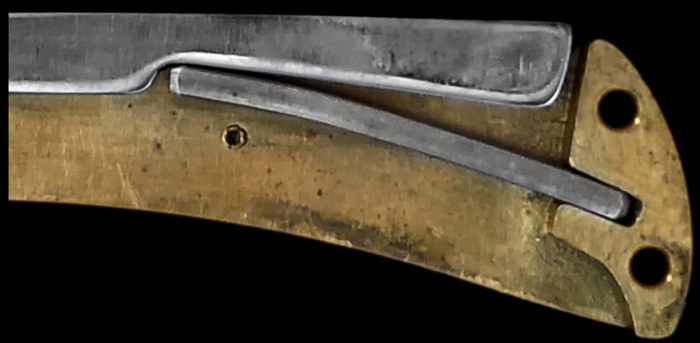 Rarer Square Spring |
COMMON
TERMS FOR PARTS OF A
110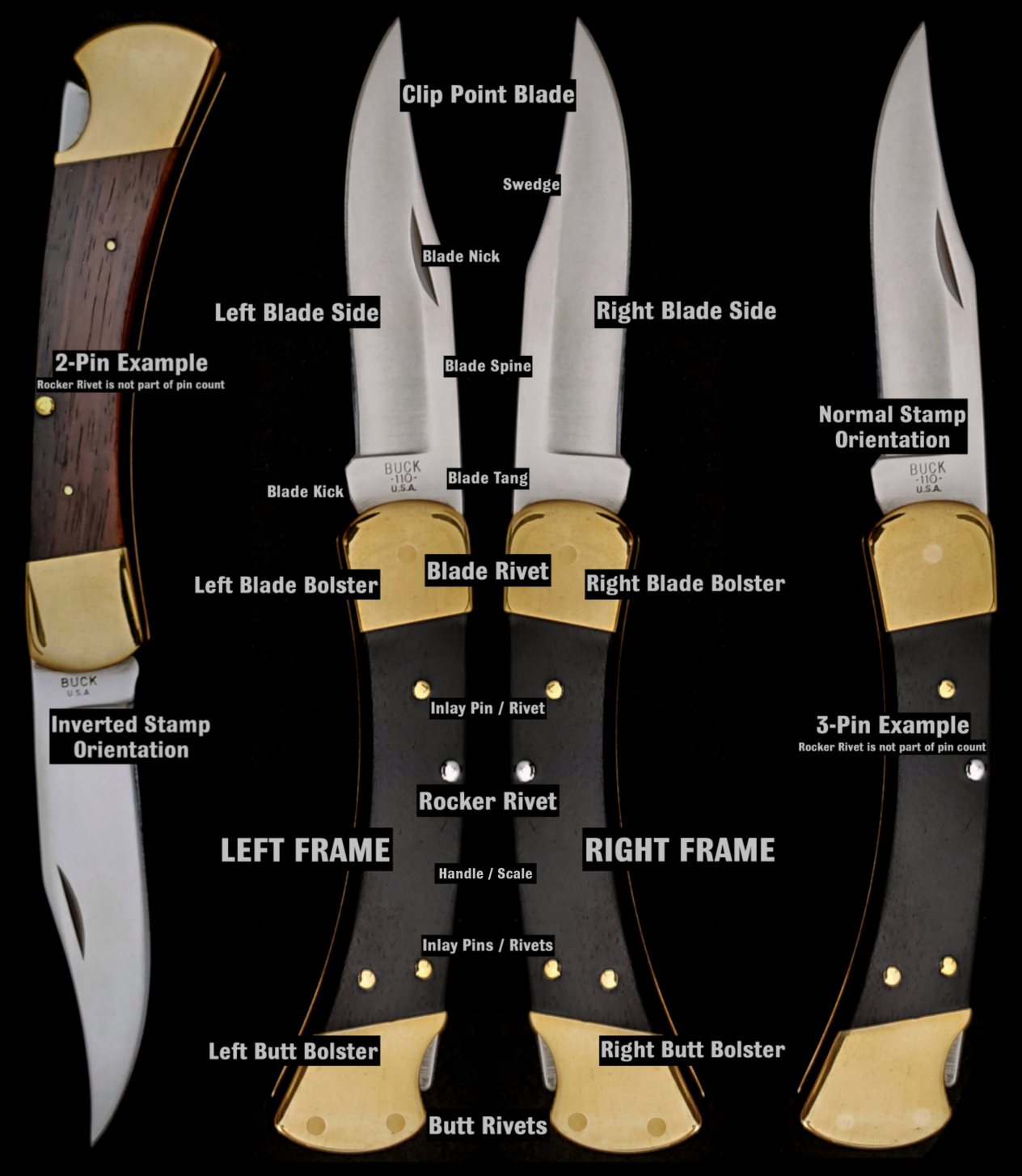 |
| SHEATHS You will find
over this 22 year course that the sheaths have gone through a
few changes. The
leather
sheaths are not dated but can be identified to an approximate time frame by their construction. Photos of the items will be placed in their approximate locations where they are believed to belong from the information gathered on them by several collectors and Buck factory historians. The earliest sheaths were produced from 1964 to 1967 by Angeles Souvenir of Los Angeles, California. They were made of a thinner leather, when compared to the later years, and had a snug fit for the smaller framed 110s of the sixties. The flap and snap will have BUCK stamped on them. They do not have the joining rivets or the 110 number stamped on the back. The next sheaths were produced from 1967 to 1969 by Atchison Leather of Atchison, Kansas. For the most part these are made of a thicker leather, when compared to the later years. The flap will have BUCK stamped on it, but not on the snap. The best identifying feature is the large dimple rivet along with a large 110 stamped on the rear located belt loop. The next sheaths were produced from 1969 to 1980 by the the new in-house Buck Leather Shop in the new North Magnolia Avenue factory located in El Cajon, California. The in-house shop was later relocated in 1980, to the much larger newly built Weld Blvd factory in El Cajon, California. The style remains the same as earlier years. The flap and snap will have BUCK stamped on them, and early versions will have 110 stamped above the belt loop. The 110 stamp was relocated beneath the belt loop about 1975, and remains there to this day.
BOXES & PAPERS Over this 22 year
period the boxes and papers have gone through
several changes
as well.
Photos of the boxes and papers will be placed in their approximate locations where they are believed to belong from the information gathered on them by several collectors and Buck factory historians. The boxes have no dates on them. They are simply identified by their style and labeling. Early papers are not identifiable by dates. They are primarily identified and dated by the factory addresses that appear on them, and placed appropriately. The first appearance of a date is March 1972 (3-72) and located in the bottom left corner. The date code will remain in that location for the remainder of the knives on this webpage.
|
| NOW
ON TO WHAT YOU REALLY CAME HERE FOR ** All dates are approximate. There were no specific records kept before date codes. ** |

 |


|

|

|

|
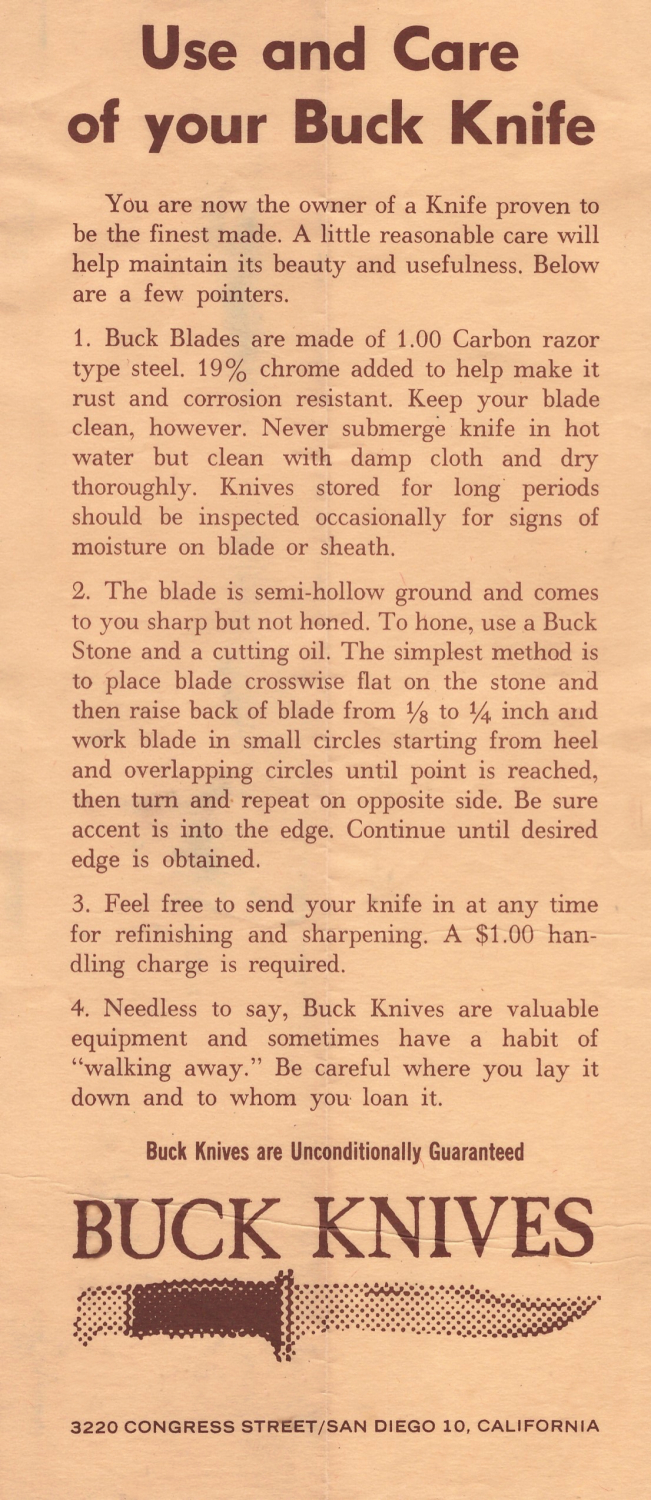
|
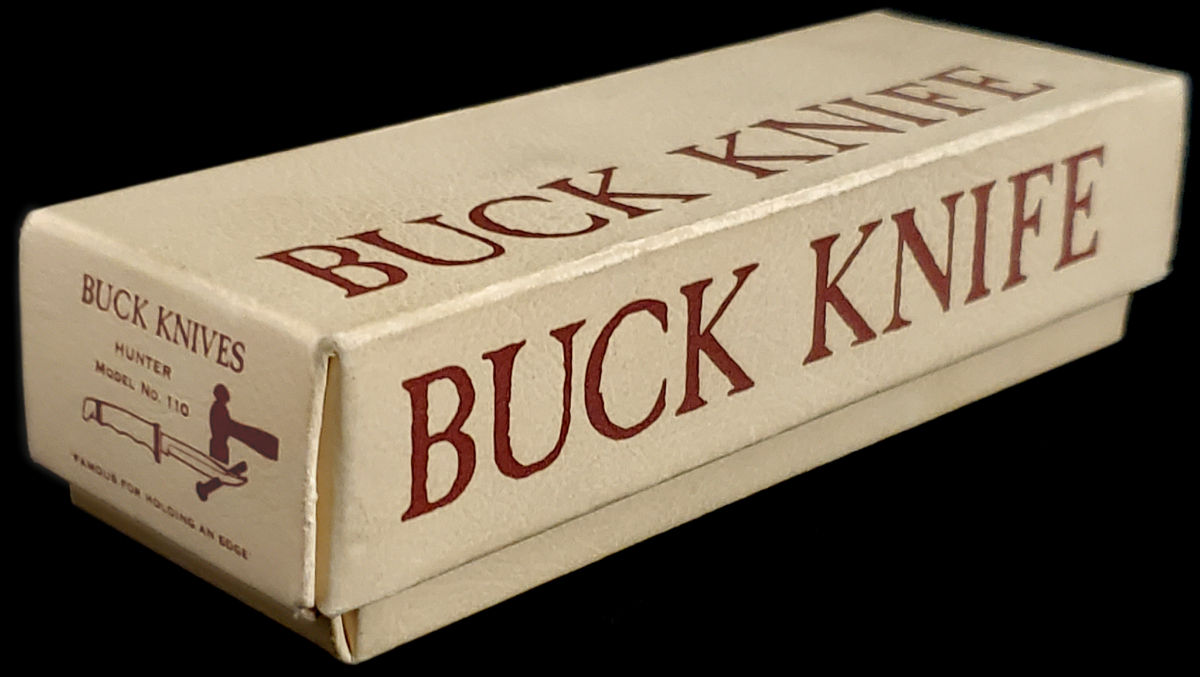
  |

|
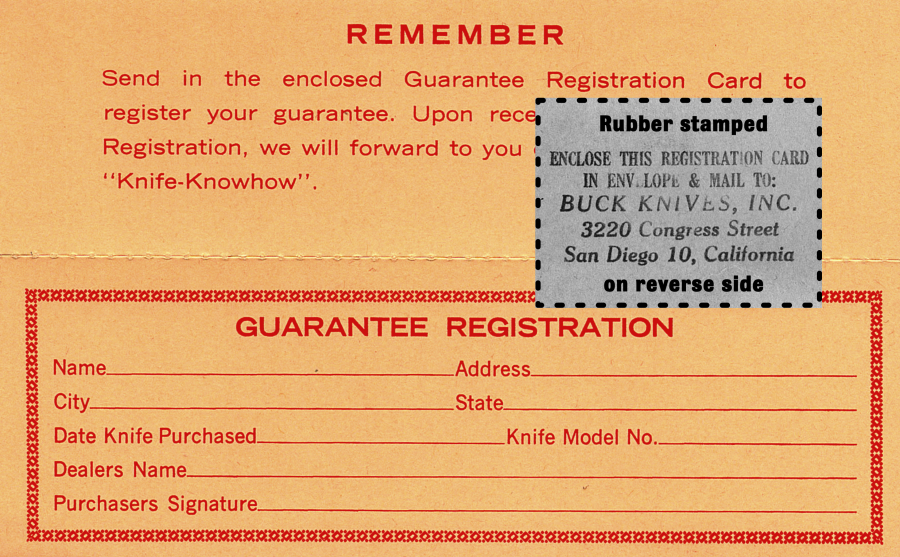
|
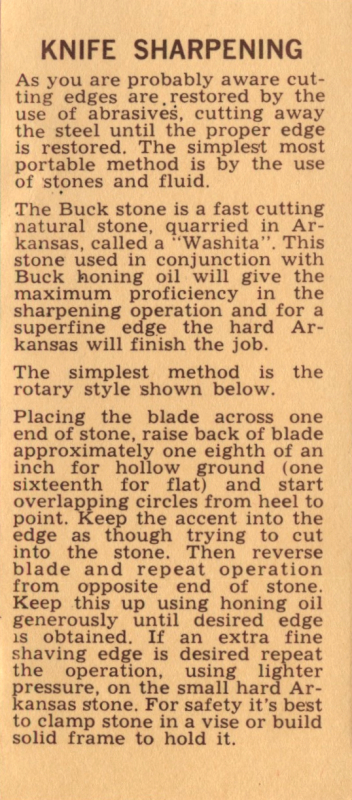 |

|
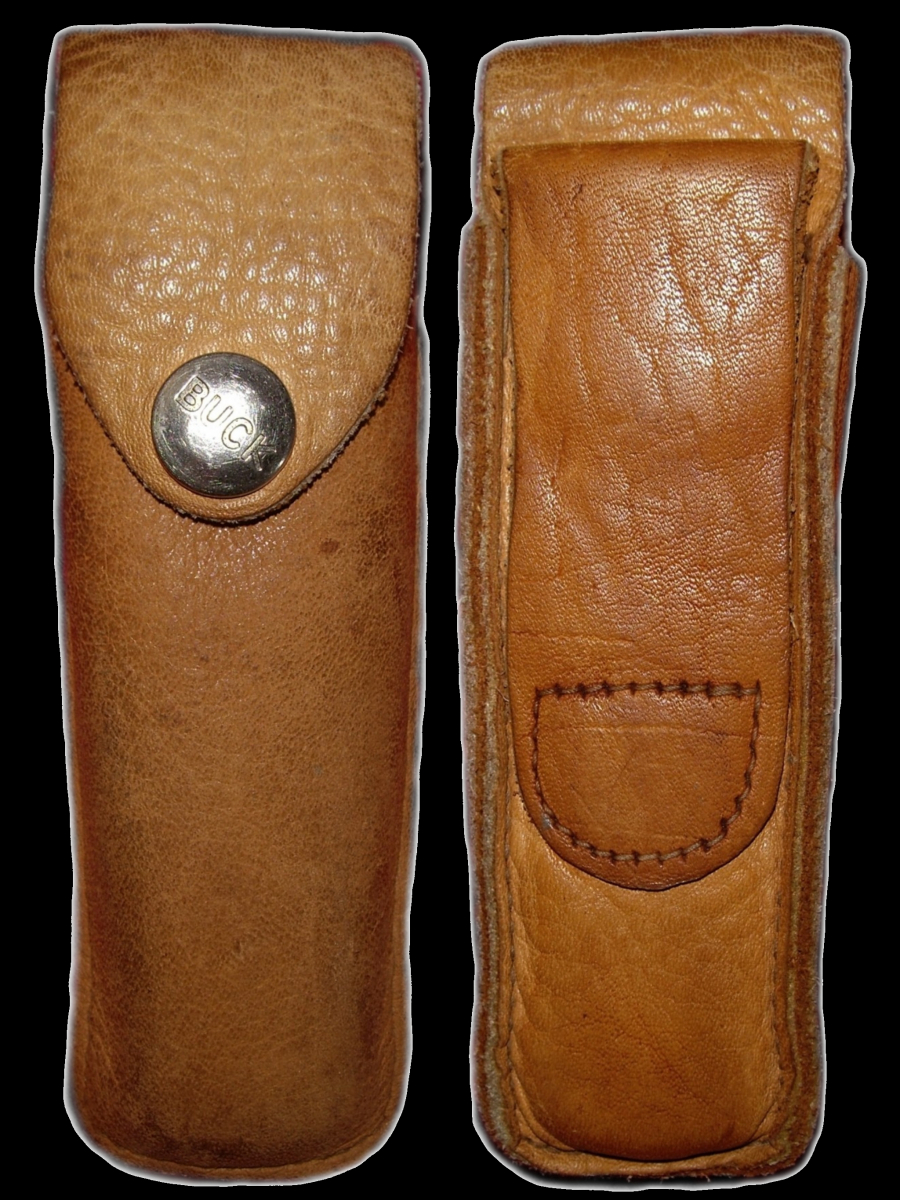 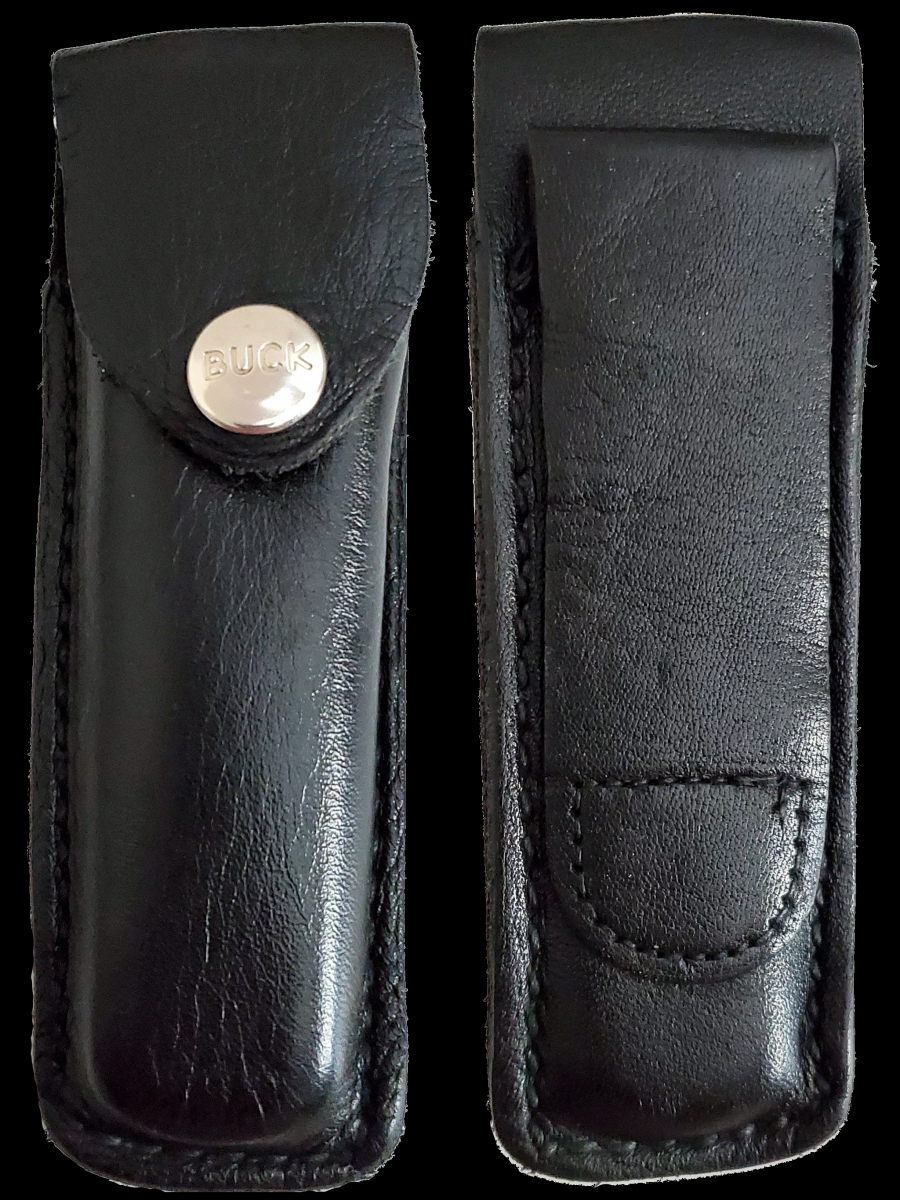 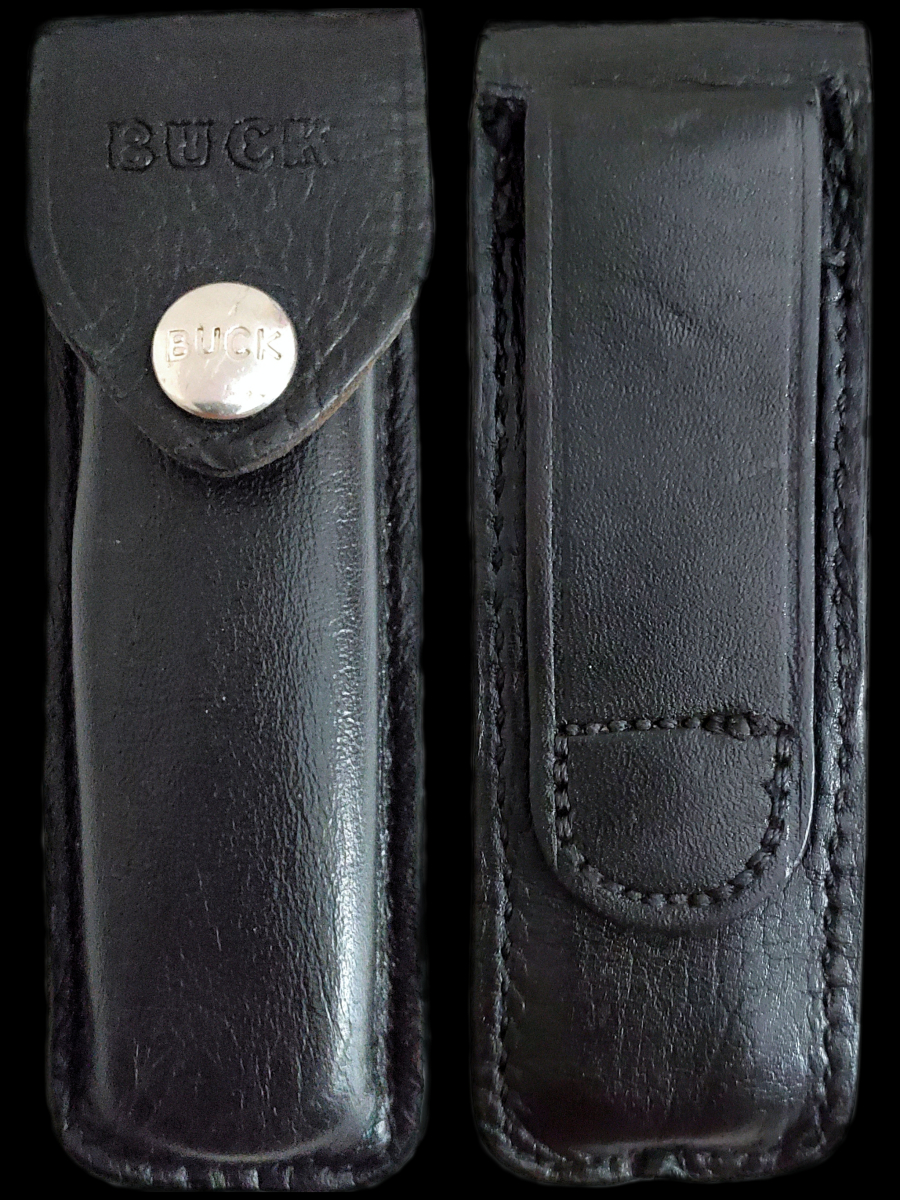
|
| ** All dates are approximate. There were no specific records kept before date codes. ** |
|
1940 to 1960 Pre-Production Fixed Blades When looking for
information on Hoyt and Al Buck's pre-production life-time knives, my
go to is Dale Eichberg.
If you are looking to identify any of the known Buck Knives hand-made by Al or Hoyt, Dale is definitely the person to contact. He has one of the most impressive collections known to all in the Buck collecting community. Chuck Buck, Sr himself said it is one of the most complete collections he had ever seen. Dale can be reached by text only at 706.260.1533 or by email at dale.eichberg@gmail.com |

 |

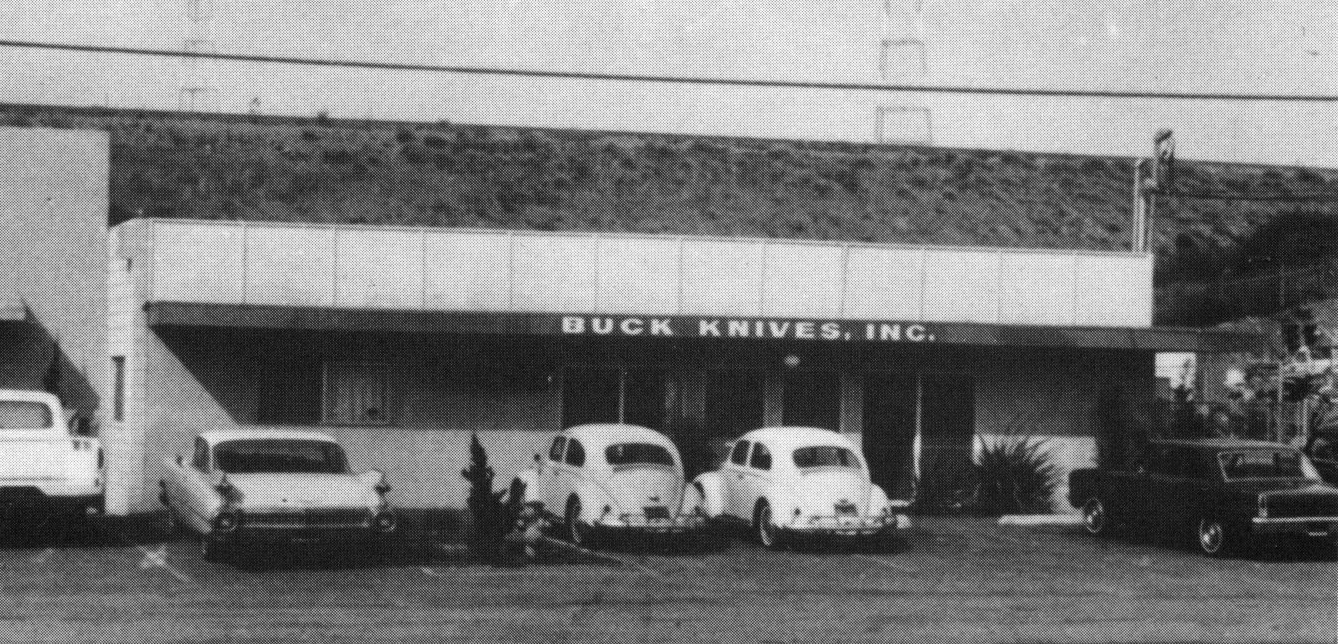
|

|

|

|

|

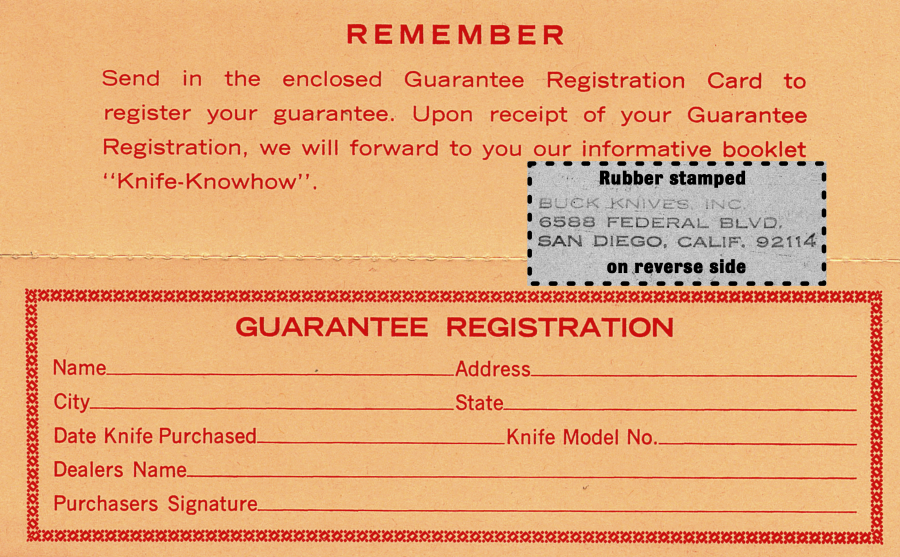
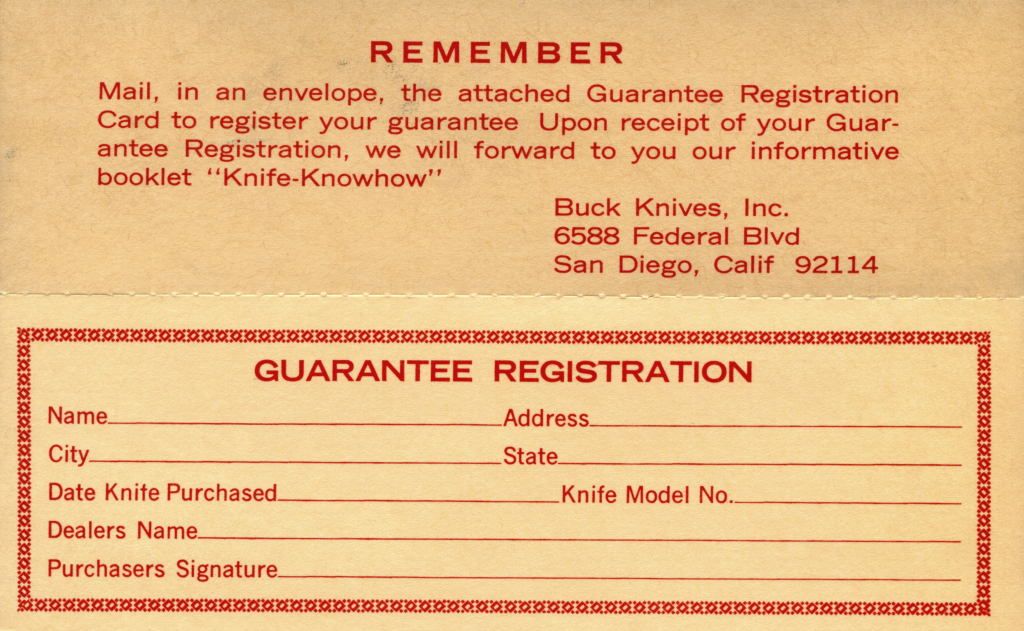
|
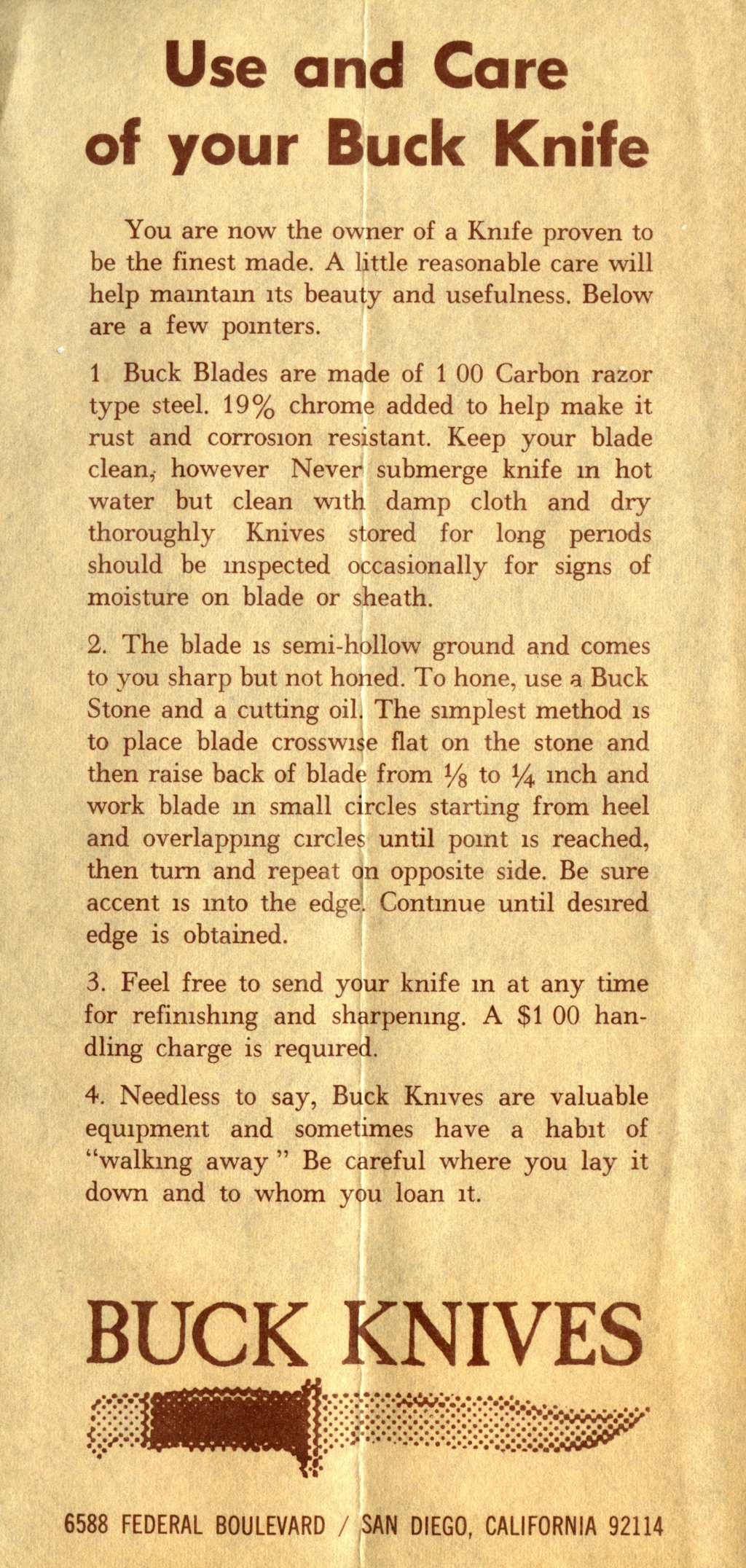
 |
 
|
| ** All dates are approximate. There were no specific records kept before date codes. ** |

 |

| First Version | Second Version | Third Version | Fourth Version | Fifth Version | Sixth Version | Seventh Version | Favorites |
| 1960s Accessories | 1970s Accessories | 1980s Accessories |
 Feel free to contact me any time with trades, questions, suggestions, additions, or corrections. |

| SPECIAL
THANKS ... to Vern Taylor, George Stinzel, and Joe Houser for their previous sharing of 110 information that further inspired my own collecting. Thanks as well to all the fellow collectors who have been asking for this source of information, which brought me to create this webpage. |

 Click the logo to visit the Buck Knives website. |
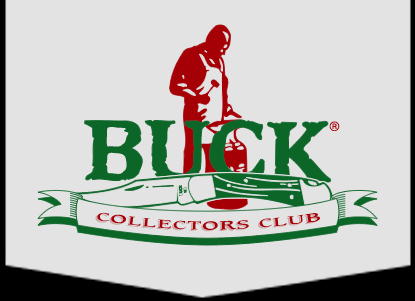 Click the logo to visit the BCCI website. |
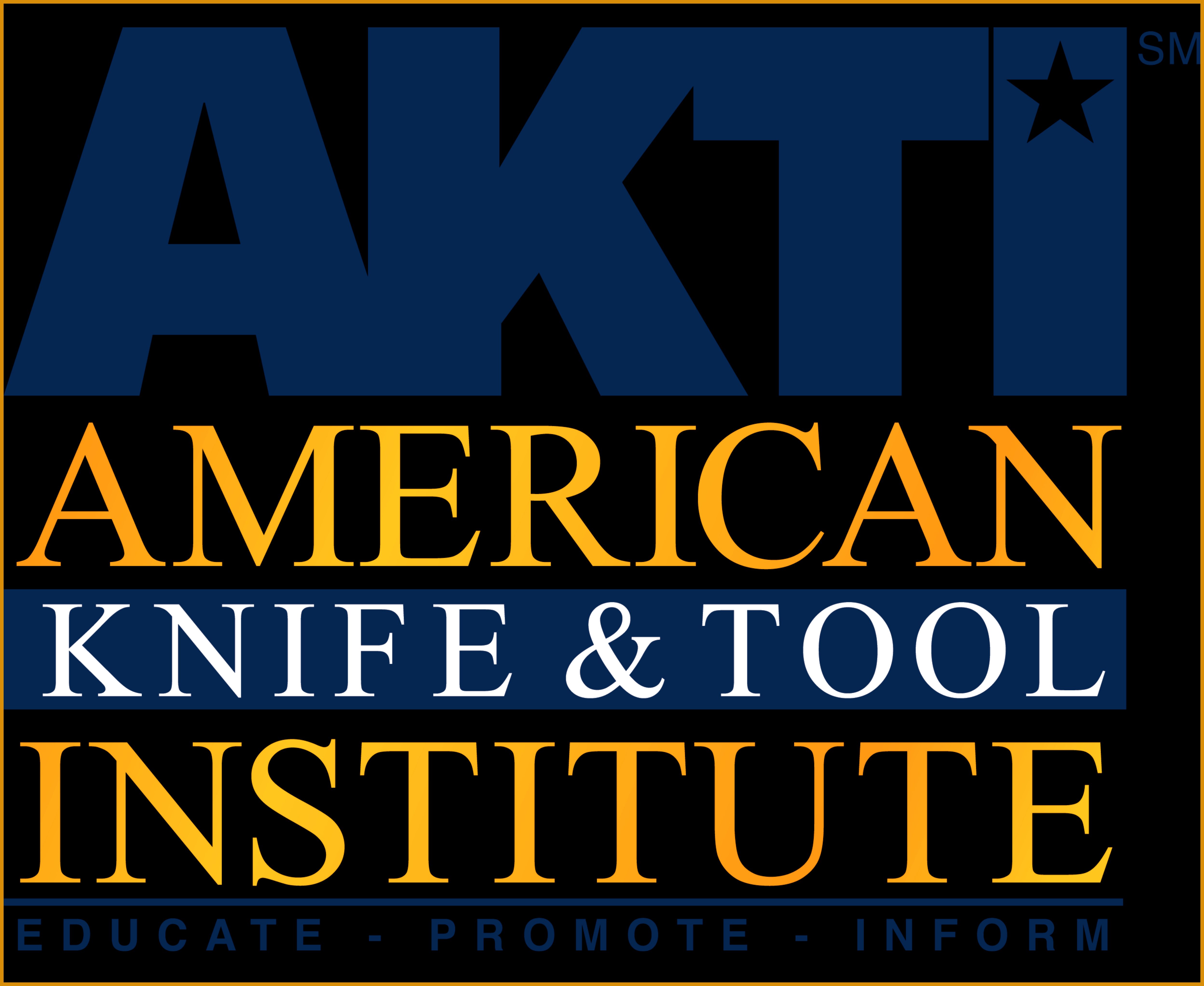 Click the logo to visit the AKTI website. |
 Click the logo to visit the FLITZ website. |

| All
Buck Knives materials, text, and images used on this
website are copyrighted and/or trademarked to the respective rights holders of said images, text or logos. All Buck Knives copyrighted and/or trademarked material is used by permission, and may not be copied or disseminated without written authorization from Buck Knives, Inc. Buck Knives, Inc. ©/® 1961 - 2020+ All personally created materials, text, and images used on this website are copyrighted to this website owner or the respective rights holders of said images, text or logos. Images and/or content cannot be used without written authorization from the website owner. Michael DF Lowe, ©2020+ Website created and maintained by Michael DF Lowe, November 2020 This website is run by a collector of the Buck 110 Folding Hunter. I am not a current, or former employee of Buck Knives, Inc. |
